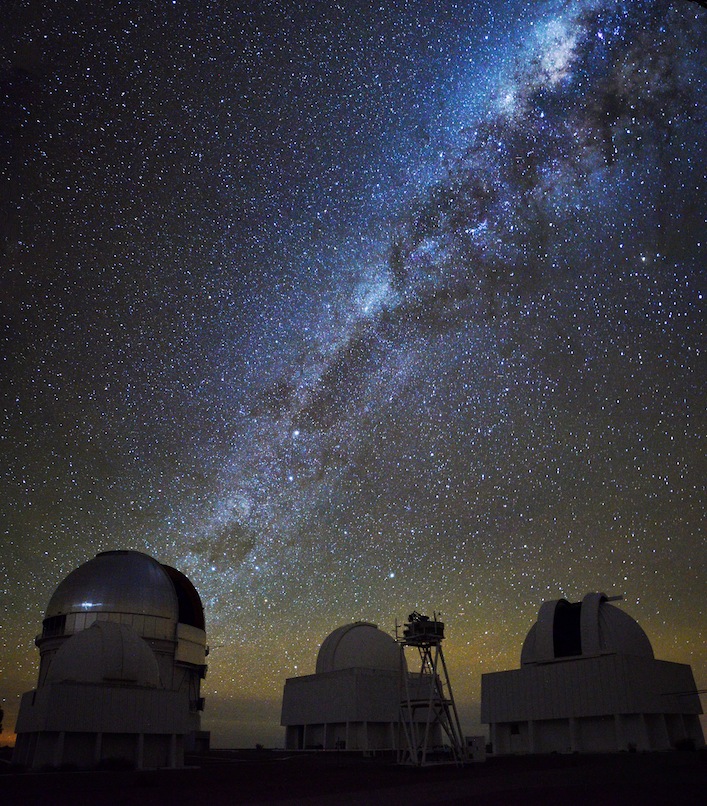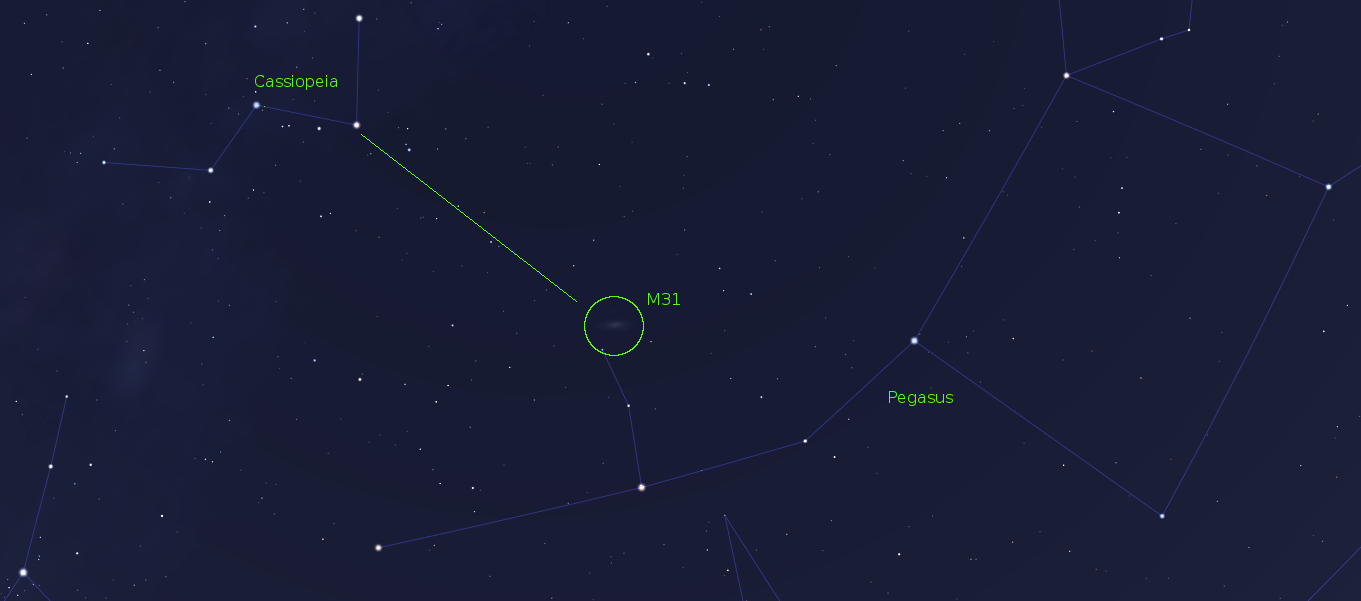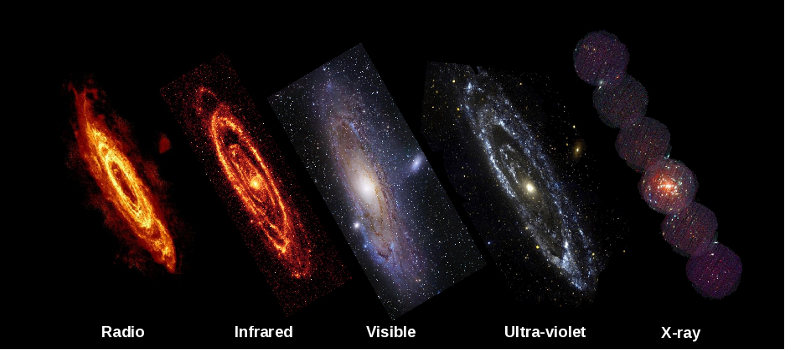Section 3.1: What is a galaxy?
galaxies
Galaxies are often described as collections of billions and billions of stars but there's so much more to galaxies than their stars. Galaxies also contain dust and gas, and now most astronomers agree that a large component of a galaxy's mass is made of matter that we can't see.
The Sun, Earth and the rest of the solar system are part of a galaxy that we call the Milky Way. Every star that you see in the night sky is part of the Milky Way galaxy. If you have ever been stargazing at a dark site, you may have seen the plane of the Milky Way stretching out across the sky.

The plane of the Milky Way above the Cerro Tololo Inter-American Observatory in Chile. (credit: Andreas Papadopoulos)
There are over a hundred billion galaxies in the observable Universe. The vast majority of these are too faint to be seen with the naked eye or even an amateur telescope. However there are a handful that you can see without the aid of binoculars or a telescope. Two of these you will have to travel to the southern hemisphere for - the Small and Large Magellanic Clouds (SMC and LMC) are satellite galaxies of the Milky Way and appear as fuzzy clouds in the southern night sky.
In the northern hemisphere it is possible to see the Andromeda galaxy, also known as M31. Andromeda is our nearest major galaxy neighbour at a distance of around 2.5 million lightyears. It can be found between the constellations of Cassiopeia and Pegasus but you will need to have a very clear dark sky to see it with the naked eye.

How to find M31 using the constellation Cassiopeia. (credit: stellarium/Jen Gupta)
In the following sections we will look at what we can learn from observations of these galaxies.

